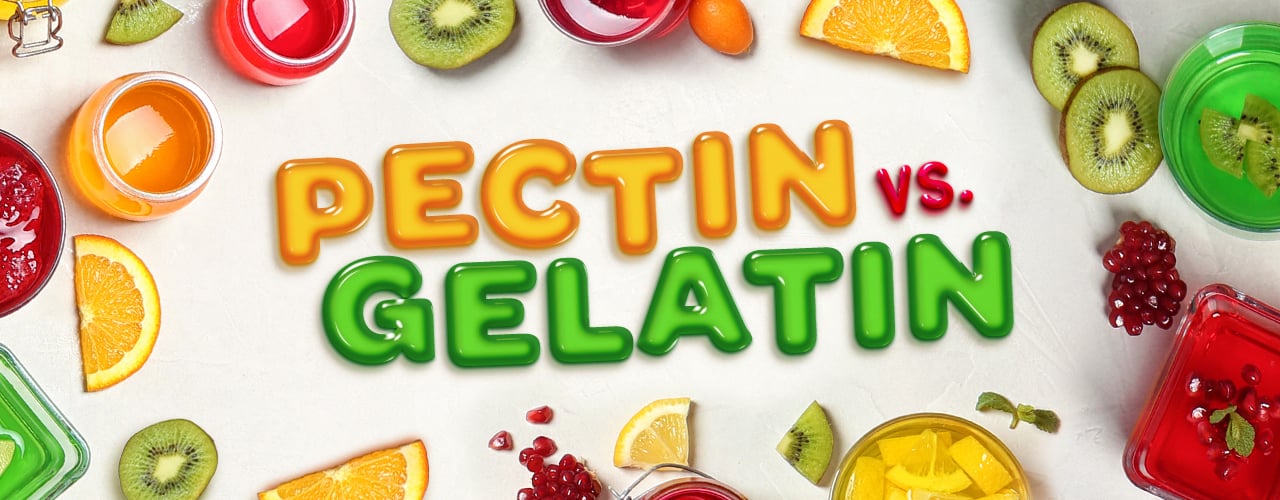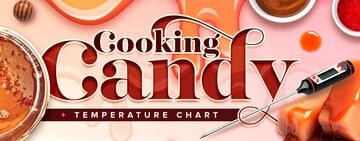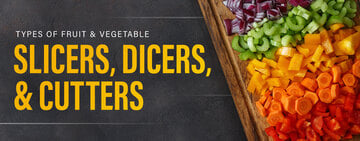Pectin vs Gelatin
Last updated on Mar 24, 2023Corrinn McCauleyWhen added to liquids, both pectin and gelatin create gel textures. However, they are two completely different substances. Pectin is a water-soluble fiber found in most fruits and plants, and gelatin is a protein chefs capture by boiling animal skin, tendons, ligaments, or bones in water. Gelatin will not return to a liquid state when reheated, but pectin will. Whether you’re canning fruit preserves or making yogurt in-house, keep reading to learn more about each type of food-thickening agent and how to use it.
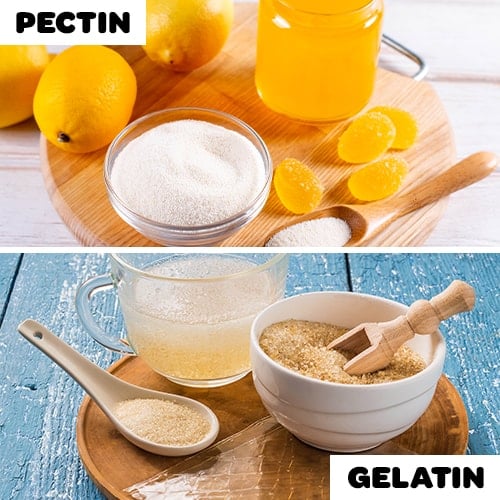
Is Pectin the Same as Gelatin?
Pectin is not the same as gelatin. Pectin is a plant-based thickening agent, and gelatin is made from animal protein. When developing vegan menu items, you cannot include gelatin as an ingredient. While both pectin and gelatin thicken liquids into semisolid gels, pectin produces a firmer texture than gelatin. If you swap pectin for gelatin in a recipe, you won't achieve the expected consistency.
What Is Pectin?
Pectin is a naturally-occurring, polysaccharide starch found in the cell walls of plants. It increases viscosity and binds water, making it a common ingredient in the food industry. Pectin is often used to thicken syrups and make jams, jellies, and marmalades. The dairy industry stabilizes yogurt with pectin. However, pectin doesn’t work alone and requires precise ratios of sugar, acid, and calcium. Following a trusted recipe is vital to successfully thickening with pectin.
The preserving trade uses two different forms of pectin: rapid-set pectin and slow-set pectin. Rapid-set pectin forms gels at high temperatures and is ideal for making jams and preserves. Slow-set pectin is best when making jelly. With slow-set pectin, the jelly doesn’t completely set inside its jar before it’s handled, which protects its texture during transport.
Types of Pectin
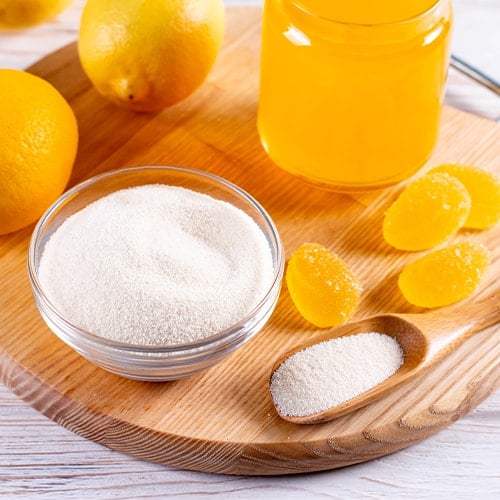
There are four different types of pectin, but the most common type of pectin is high methoxyl pectin (HM). Learn more about the different types of pectin below:
- HM Pectin - Extracted from citrus fruit peels, HM pectin comes in two forms: rapid-set and slow-set. Its form determines the time and temperature required for firming. Fast-set HM pectin needs a higher temperature and less time to set. Use it to make chunky marmalades and jams. Slow-set pectin needs a lower temperature and more time to set. If you’re making a clear jelly, use slow-set HM pectin. You need lots of sugar and very specific levels of acid to make both forms of HM pectin solidify.
- LM Pectin - Low methoxyl pectin (LM) uses calcium rather than sugar to solidify. As you add calcium, the LM pectin will get firmer and firmer until it reaches its saturation point. After it’s saturated, LM pectin will reverse its process and loosen. LM pectin is used to make low-calorie jams.
- Pectin NH - Made from amidated LM pectin and calcium phosphate, pectin NH is a modified form of LM pectin that doesn’t need as much calcium to set. It is thermally reversible so you can remelt and reset it as needed. Pectin NH is popularly used to make fruit glazes and fruit fillings.
- Apple Pectin - Derived from apples, apple pectin is typically sold in a powdered form and used to thicken or stabilize foods. The pharmaceutical industry uses apple pectin in medicine, supplements, chews, and laxatives. It contains dietary fiber, sodium, healthy carbohydrates, copper, and zinc.
Liquid Pectin vs Powder
Liquid pectin and powdered pectin are the same ingredients. However, they are not interchangeable because they require different cooking processes. Adding powdered pectin towards the end of cooking risks clumping. When making jams and jellies, whisk powdered pectin into your fruit or fruit juice before simmering it. Once your mixture is cooked for the recipe-specified amount of time, add your sugar and boil vigorously for one minute. Liquid pectin will thicken immediately, so it’s added to the cooked fruit and sugar mixture once it’s simmering and then boiled for one minute to ensure even dispersion.
You can adjust your ratios and exchange liquid pectin for powdered, just remember to use the appropriate cooking method for your form of pectin. Use two Tbsp. of powdered pectin for every packet of liquid pectin. Add dry pectin early so it has time to rehydrate in the liquid, dissolve, and disperse evenly. Liquid pectin is ready to thicken immediately, so you can add it toward the end of your cooking process.
Uses for Pectin
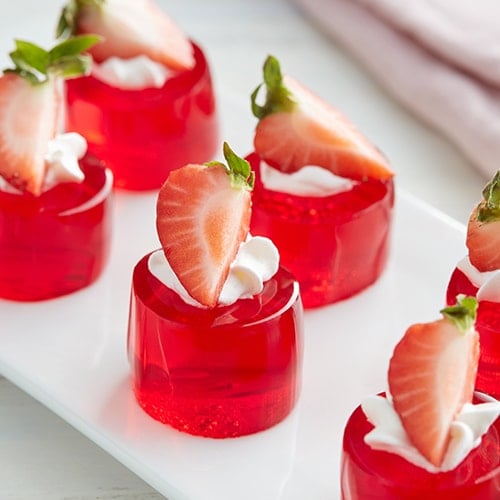
Pectin has multiple uses:
- Thickening Foods - Pectin acts as a thickener in cooking and baking. It is commonly used for jam and jelly making.
- Frozen Foods - Pectin is added to frozen products to slow the growth rate of crystals and reduces syrup loss. It stabilizes the freeze-thaw effects of whole fruit or fruit pieces and can improve the quality of fruited frozen desserts.
- Medicine - The pharmaceutical industry uses pectin to make certain medicines.
What Is Fruit Pectin?
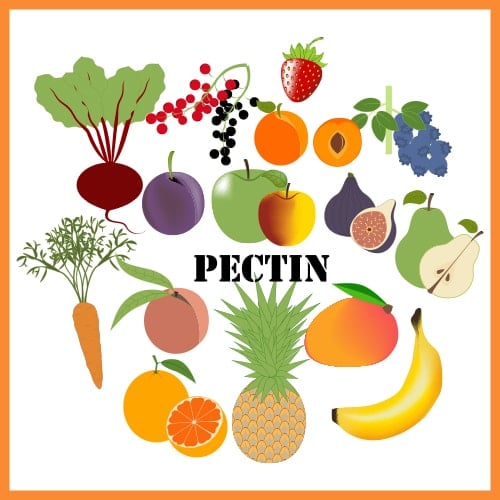
Fruit pectin is another name for pectin. Most commercially available pectin is made from fruit by-products. So, many manufacturers label their pectin as “fruit pectin.”
Is Pectin Vegan?
Pectin is made entirely from plants and is a vegan food-gelling agent. Both powdered and liquid pectin is safe for use in vegan and vegetarian dishes.
Back to TopWhat Is Gelatin?
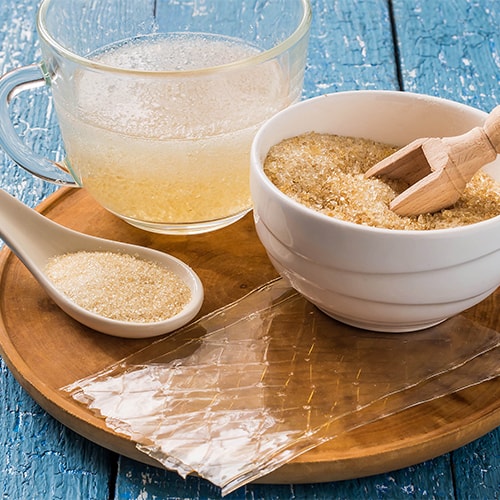
Gelatin is an animal protein that the food industry uses to thicken liquid and semi-liquid foods. It’s also used in cosmetics, drug capsules, and photography. Gelatin is tasteless and transparent. It has a rubbery consistency when moist, but it becomes brittle when dried.
What Is Gelatin Made Of?
Gelatin is made of collagen. Manufacturers extract collagen from the skin, bones, and connective tissue of pigs and cows to make gelatin. Less frequently, they source collagen from other animals and fish bones.
How Is Gelatin Made?
Gelatin is made by boiling the bones, skin, or connective tissues of animals to extract protein. Once extracted, it will partially solidify. If you’ve ever made stock with animal bones and can picture the gelatinous layer that forms on top of the pot, then you’ve seen gelatin. Commercial manufacturers of gelatin purify their gelatin before drying and packaging it for sale.
Uses for Gelatin
Gelatin has multiple uses:
- Thickening Liquids - Gelatin thickens liquids and is commonly added to soups, broths, and sauces.
- Candy Making - Gelatin is used to make gummy candies and marshmallows.
- Medicine - The pharmaceutical industry uses gelatin to make certain medications.
- Cosmetics - Cosmetic products are often thickened with gelatin.
Is Gelatin Vegan?
Gelatin is not vegan. It is made from the animal protein collagen. Agar-agar, a plant-based alternative to gelatin, is occasionally marketed as gelatin. In the culinary world, agar-agar is shorted to agar. It is derived from seaweed and serves the same purpose as gelatin in recipes.
Where Does Gelatin Come From?
In most cases, gelatin is made from pig skins, beef and porcine bones, and bovine hides because they contain high concentrations of raw collagen. As by-products of the meat industry, repurposing these raw materials into gelatin reduces food waste.
Back to TopGelatin vs Pectin FAQ
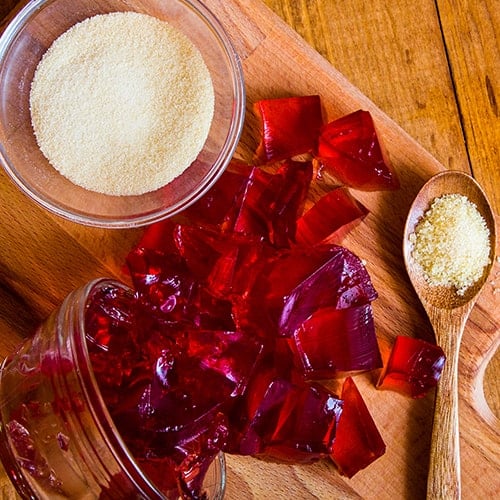
Still have more questions about pectin vs gelatin? We answer common questions about gelatin and pectin below.
What Is Pectin Made Of?
The most popular sources of pectin are dried citrus peels and apple pomaces. Fruit juice producers wash and dry leftover apple pomaces and citrus peels before delivering them to a central pectin production unit. These raw materials are treated with hot water that contains an extraction aid. This extracts pectin, a carbohydrate found in the cell walls of citrus peels or apple pomaces. Once extracted, the pectin is separated and purified. Sugar beet residues can be used to make pectin, but it’s a less common source because using discarded citrus peels and apple pomaces post-juicing reduces food waste.
Is Gelatin Pork?
Due to their high concentrations of collagen, pork skins and bones are common sources of gelatin.
What Is Jell-O Made Out Of
Jell-O is made from natural or artificial flavors, sweeteners, and food colorings thickened by gelatin. Because it contains gelatin, the brand name Jell-O is not a vegan- or vegetarian-friendly product. You can find vegan versions, but you must read your labels carefully if serving vegan customers.
What Does Pectin Do?
As a carbohydrate found in the core and skin of raw fruit, pectin provides structure to the cell walls of plants. When it’s extracted from its natural source and added to solutions, pectin traps liquids and sets into a gelatinous form when it cools. Chefs use pectin as a thickening agent and the pharmaceutical industry uses it to make medicine.
Pectin Substitute
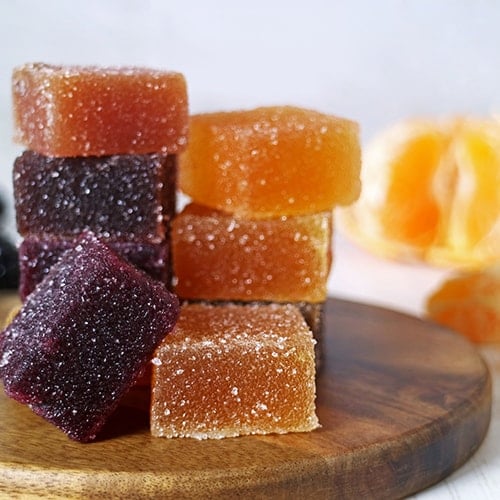
If you don’t have any pectin on-hand and your recipe calls for it, consider the following pectin substitutes:
- Citrus Peels - Naturally high in pectin, you can substitute citrus peels for pectin.
- Cornstarch - Another plant-based thickening agent, cornstarch is a great substitute for pectin.
- Gelatin - For non-vegan menu items, you can substitute gelatin for pectin, but it will yield a different consistency.
- Sugar - If you're making jam, you can thicken it by cooking it for extended periods with a lot of added sugar.
What Is Beef Gelatin?
Beef gelatin is collagen protein extracted from beef bones and hides. Manufacturers boil the raw beef materials until the collagen isolates, and the amino acids break down into small parts. Once it’s extracted, they hydrolyze the collagen into gelatin.
Is Gelatin Made From Bones?
Gelatin is often made from bones. It is a protein extracted from the bones of cows and pigs. It is also obtained from animal skins.
Foods High in Pectin
Pectin naturally occurs in fruits and vegetables, but some produce contains higher pectin levels than others. Citrus fruits are high in pectin. All fruits contain the most pectin when they're barely ripe because pectin levels decrease during the ripening process. Foods high in pectin include:
- Oranges
- Grapefruits
- Lemons
- Apples
- Pears
- Carrots
- Guavas
- Plums
- Gooseberries
- Plums
Sources of Gelatin
Most gelatin is sourced from pork skins and bones or split cattle hides and bones. Those who abstain from eating pork or cattle for religious reasons source gelatin from fish by-products.
What Is Pectin Used for in Jam?
Pectin is used as a thickening agent in jam. As a carbohydrate found in the skin and core of raw fruit, it is natural structural cement. When you add it to solutions, it forms a mesh that traps liquid and sets as it cools. In clear jams, slow-set HM pectin creates a sticky, dense consistency. When added to chunky jam, rapid-set HM pectin prevents the fruit pieces from settling on the bottom of the container.
What Is Powdered Pectin?
Powdered pectin is liquid pectin that has been dried and formed into a powder.
Back to TopBoth pectin and gelatin thicken foods, but they are two very different substances. Next time you're canning goods, making jelly candies, or thickening soups, reference back to this pectin vs gelatin guide. Knowing how to use each ingredient and the best substitutes and cooking methods for each are vital to getting your recipes set up right.
